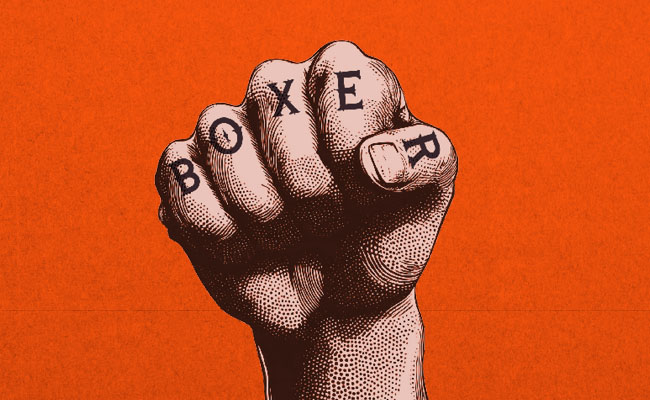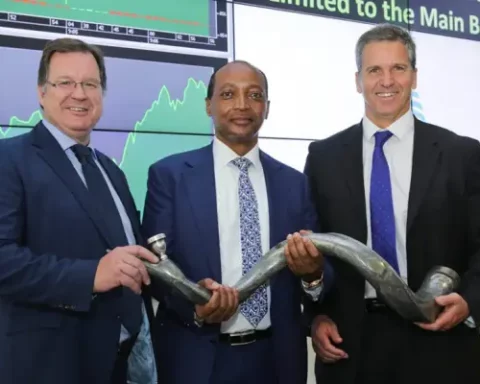When you’re drowning in debt and every day represents another few million rands in crippling interest charges or another store closure, it’s probably difficult to stop long enough to contemplate niceties like shareholder democracy.
Which is why the vast majority of Pick n Pay’s 30,000 shareholders shouldn’t bother waiting for an invitation to subscribe for shares in the soon-to-be-listed Boxer. These people, many of whom supported Pick n Pay for years, won’t make it into the ranks of “qualifying investors” who get early access to the shares of the low-cost Boxer.
Some will shrug their shoulders and nod to the inevitability that this is how markets work – the large wealthy institutions call the shots; the smaller players scrap for what they can.
Others, such as analyst and former banker Paul Miller, refuse to accept this inevitability.
Miller contends markets would be more flexible, vibrant and efficient if all participants were treated equally. He acknowledges that what Pick n Pay is doing is legal, but is dismissive of its excuse that excluding most of its investors from the offer is “standard practice”.
“If you don’t include all investors – large and small – the JSE will die,” he tells Currency.
Miller is particularly miffed that there are no set criteria for who constitutes a “qualifying investor” for the Boxer offer. It is difficult not to suspect that those who “qualify” will all be mates of Pick n Pay’s bankers.
Either way, like it or not, these investors are likely to remain out in the cold.
In a way, you can see how this happened. Pick n Pay is under intense pressure to get the Boxer listing done, at the best price, as quickly as possible, to repay the banks. The easiest way to do this, Sean Summers’ retailer seems to think, is to hand the process over to the “book runners”, also known as the joint global co-ordinators.
A book runner – which otherwise sounds like a character out of a Damon Runyon novel about the prohibition – builds the order book for Boxer shares ahead of its listing. They provide investors with vital information, including a price range for the stock. They do this by building up a list of bids from potential investors pitched at different prices and quantities, and finally calculate the value they believe will maximise the proceeds.
To be fair, companies are under no obligation to offer shares to the general public; indeed most listings in recent years have been private placements.
But Pick n Pay, which has lost ground badly to rival Shoprite over the past two decades, is showing little appreciation for the loyalty of the thousands of shareholders who have supported it.
Bankers call the shots
On October 1, many of these shareholders arrived to vote on the Boxer unbundling, hoping to be given access to one of Pick n Pay’s few growing businesses. The near-unprecedented 82.4% illustrates a deep connection with the once-dominant retailer, which opened in 1967.
Only, most of them won’t be considered “qualifying investors”, unless the book runners decide on a last-minute change and throw open the criteria, rather than limit it to insiders at the large asset managers.
The book runners have good reason to wrap it up quickly. Three of them – Absa, RMB and Standard Bank – are part of a banking consortium that is owed R5.5bn by Pick n Pay.
With proceeds from the listing set to be used to pay down the debt, they can easily pass on the benefit to their “qualifying investors”.
Boxer’s listing circular makes no bones about what’s at stake for Pick n Pay. If the listing date is missed, the banks can take “remedial measures”, including hiking interest rates across the retailer’s credit facilities by 1%. That puts the banks firmly in the driving seat.
It says much about Pick n Pay’s regard for its smaller shareholders that an “investor day” on October 3 was restricted to a select group of “invite-only” investors, who had up to four hours to meet with Boxer’s management team.
Pick n Pay’s share price, which spiked after the vote on October 1, continued its climb after the presentation. Over the past six months, partly due to the plan to list Boxer, its stock has risen 42%, even though it is still sharply lower over a decade.
Still, Pick n Pay did release 18 slides on its website, which it said, unpersuasively, covered all the material discussed during the presentation. It remains hard to shake the impression that select shareholders are being given preferential treatment.
‘Private placement’
Andre Visser, the JSE’s director of issuer regulations, tells Currency that a principle of the listings requirements is that companies must ensure “full, equal and timeous disclosure is made to all holders of securities and the public at large” about price-sensitive activities.
While Visser would not comment specifically on Boxer, he says it is market practice for companies to have briefings with investors. But, he says, “it is very important that during such briefings, unpublished price-sensitive information is not disclosed”.
But that investor meeting was held on October 3 – two days after the general meeting of shareholders – which raises the question of whether the select investors got their invitation ahead of the vote.
Pick n Pay is irked by this scrutiny, however. It feels the Boxer listing is being singled out, even though what it is doing is in line with market standards.
“Full details regarding the initial public offering, including the book runners and the criteria applicable to qualifying investors, will be set out in any prelisting statement that is published” in due course, it said.
Pick n Pay also stressed the listing is being structured as a “private placement” and not a “public offer”.
Evidently, Pick n Pay has little appreciation of the word “public” in initial public offer. But more to the point, it is a gigantic missed opportunity for a company that has fallen sharply out of public favour to rekindle investor sentiment.
Cover image: Collage by Currency










